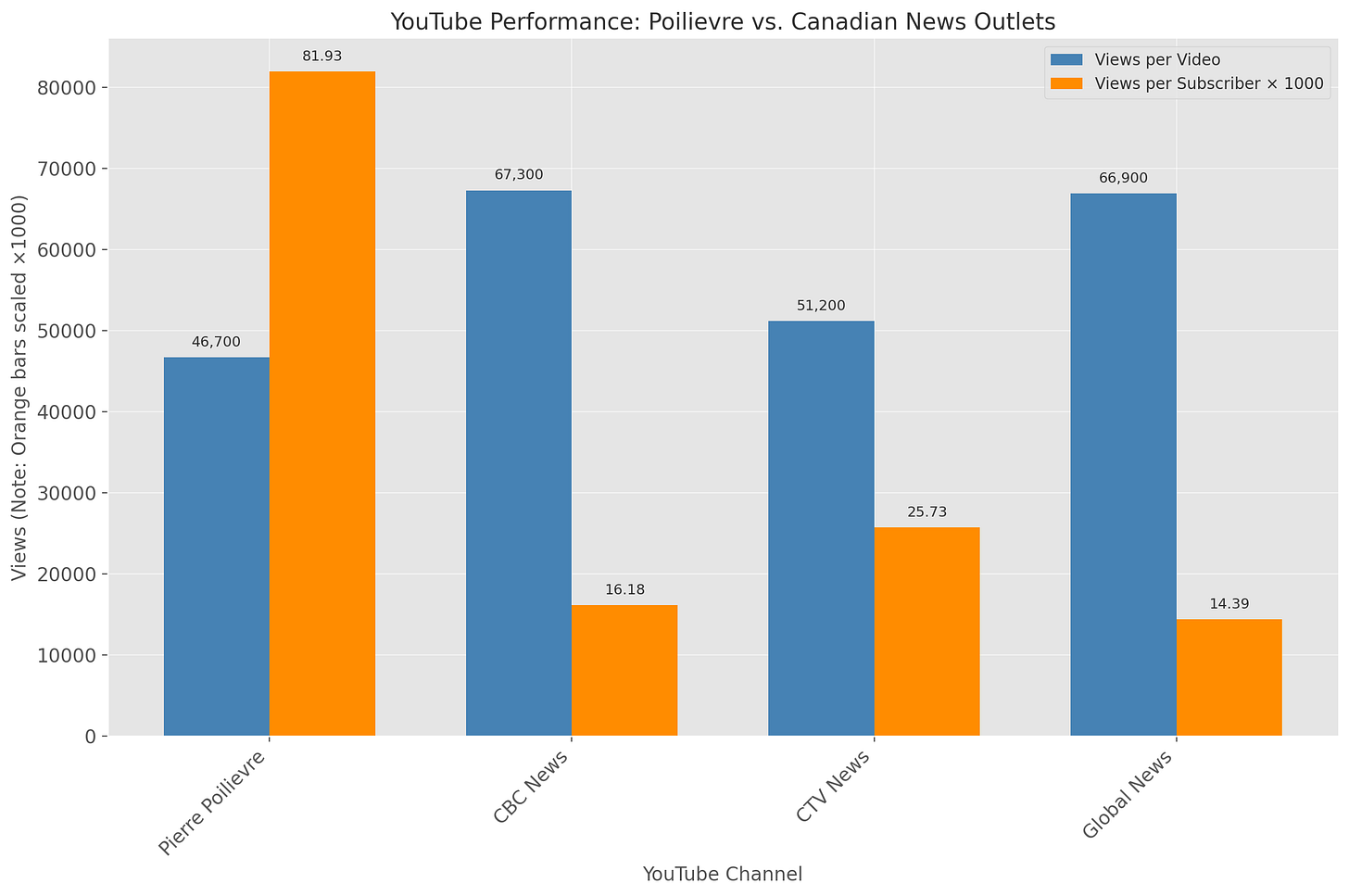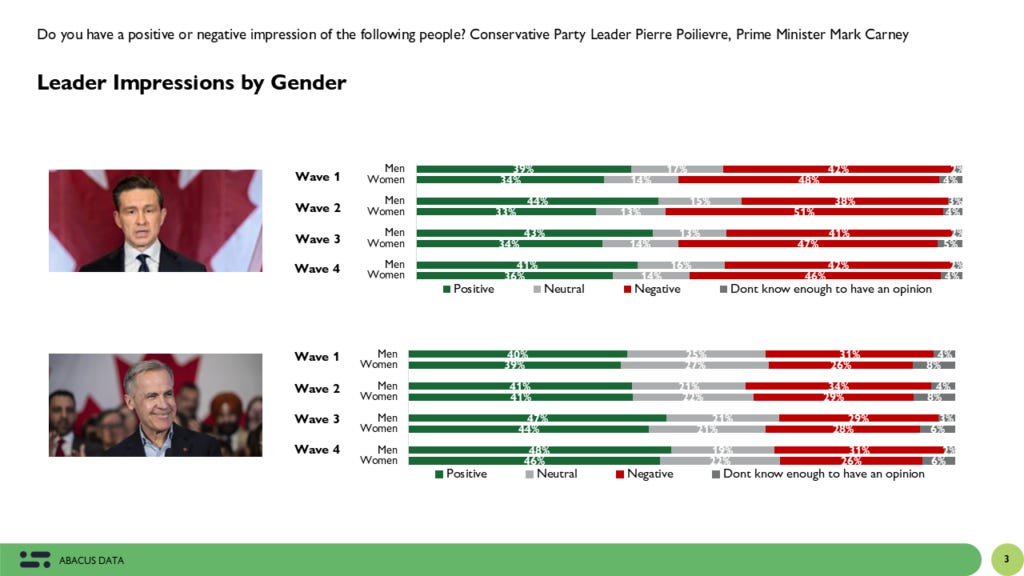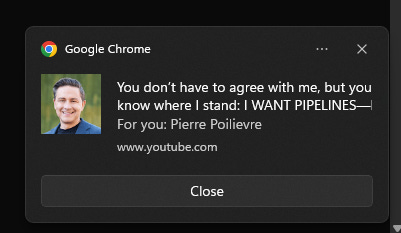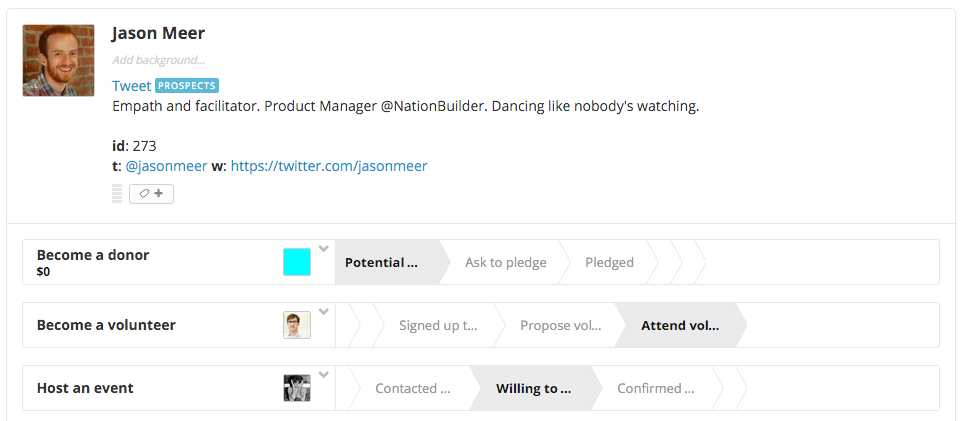Views, Rage, Repeat: How the Conservative Party Became a Media Powerhouse
CBC may broadcast to millions—but Poilievre speaks directly to his base, one notification at a time
Have you ever found yourself arguing with a Conservative online and felt like they were living in an alternate universe? Like no matter how many facts you offer, it’s as if you’re speaking entirely different languages? That’s not a coincidence. It’s by design.
Pierre Poilievre and the Conservative Party of Canada have spent years constructing a closed-loop messaging machine — one that doesn’t just shape opinions but manufactures reality. It’s targeted, insulated, emotionally charged, and incredibly effective at turning disengaged Canadians into hyper-loyal partisans. But to understand how it works, we have to start by looking at the tools that made it possible.
The Tools of the Trade: From Marketing Metrics to Political Profiling
For decades, marketers have used something called Net Promoter Score to figure out how people feel about a brand. It’s simple; ask one question: “How likely are you to recommend this to a friend?” Based on the answer, customers are sorted into three categories — Promoters, Passives, and Detractors. If you love the product (9 or 10 score), you’re a promoter. If you’re neutral (7 or 8 score), you’re passive. If you hate it (0 to 6 score), you’re a detractor. Believe it or not, that one question tells companies everything they need to know.
Political strategists adapted that model a long time ago. They use it to profile voters. If you’re a supporter, they’ll give you messaging, rally invites, and donation prompts. If you’re undecided, they’ll try to pull you closer. But if you’re a detractor — if you tell them to pound sand — you don’t just get ignored... you get tagged, profiled, and strategically written off.
And you don’t need to vote Conservative to end up in their database. Maybe you got a text message and replied with a sarcastic “CPC can kick rocks.” That reply doesn’t go into a void; it gets categorized. Now they know what you’re not, and that’s just as valuable.
Manufacturing Support: YouTube, MGTOW, and the Echo Effect
Now let’s talk about where the real messaging lives. It’s not the party website. It’s not the evening news. It’s YouTube.

Poilievre figured out early that YouTube wasn’t just a platform; it was a pipeline — straight into the eyes and ears of disaffected Canadians. He started loading up speeches, attack ads, mini-documentaries, and viral gotcha clips, all dressed up in slick production and populist punchlines. His channel didn’t just grow... it exploded. As of April 2025, it boasts over 570,000 subscribers and more than 164 million views, rivaling some major Canadian media outlets in reach and influence [2].

And for two years, no one noticed that Poilievre’s videos were quietly tagged with #MGTOW — short for “Men Going Their Own Way,” an online misogynist subculture rooted in grievance, entitlement, and conspiracy. These tags, invisible to viewers but read by algorithms, helped his content reach a very specific audience: young, disaffected men, often in the trades, often skeptical of institutions, and very often angry. Once hooked, they brought the message into their real-world circles — job sites, break rooms, barbecues — where it spreads faster than fact checks ever could [3].
That’s not just recruitment... it’s indoctrination through repetition.
Sidebar: How to Reach Someone Inside the Conservative Bubble (Without Fighting)
1. Lead with empathy, not argument.
Start by listening. People are more likely to open up when they feel heard, not judged. Don’t start by trying to correct them — show you understand why they feel frustrated.2. Ask curious questions.
Use open-ended questions like: “Where did you hear that?” or “What makes that issue important to you?” You’re not cornering them; you’re inviting them to reflect.3. Focus on shared values.
Acknowledge real concerns — like affordability or government accountability — before discussing claims. That builds trust and keeps the conversation from feeling combative.4. Avoid labels and trigger words.
Skip terms like “conspiracy” or “fake news.” Talk about “rumours” or “conflicting info.” It’s about tone — not watering down, but easing defensiveness.5. Use one issue at a time.
Don’t take on their entire worldview. Choose one claim or topic and walk through it together. Keep it grounded, not ideological.6. Compare sources together.
Invite them to look at where the info came from. Ask: “Does this person have expertise?” or “Are other outlets reporting the same thing?”7. Tell stories, not just facts.
Personal experiences and relatable examples stick better than stats alone. They soften resistance and humanize complex issues.8. Leave the door open.
You don’t need to win the argument — you need to keep the connection. Plant the seed and stay available. Minds change slowly… but they do change.
Captive Audiences and Outrage on Tap
Once you’re inside the Conservative digital ecosystem, the flow of content never stops. There’s no waiting for the 6 o’clock news. Instead, you get a steady diet of notifications and text blasts — each one crafted to look like breaking news. “Trudeau’s latest scandal exposed — click here to see Pierre’s response.” It’s engineered outrage, perfectly timed, and always one-sided.

It works because it feels exclusive. It feels like you're on the inside of something — like you've cracked the code that “the elites” don’t want you to see. But really, you're just being fed a story that’s been focus-tested and rage-optimized.
Every video is a product. Every comment section is a rally. And every click helps fund the next wave of content.
The Ecosystem That Reinforces the Bubble
But the CPC doesn’t do this alone. They get a huge assist from their unofficial surrogates — the Rebel Medias and Post Millennials of the world — who act as both megaphones and attack dogs. When mainstream journalists ask real questions, they’re labelled as biased. But when Rebel News tosses a softball, it gets amplified as a “gotcha.”
We’ve seen how this plays out. In the French-language leaders’ debate press conference, Poilievre fielded a friendly question from Rebel News, launching into a fiery (and false) tirade about Bill C-11. He claimed the Liberals wanted to censor the internet... to silence independent voices... to force Canadians to consume “state media.” None of it was true. But none of it had to be [5].
After the French debate, Poilievre fields a friendly question from Rebel News, a partisan outlet amplified by the Conservative campaign to shape post-debate coverage.
Because his audience — a captive audience — had already been primed to believe it.
That same network launched ads linking Mark Carney to Jeffrey Epstein, using a photo from a 2013 gala to seed doubt and disgust. There was no evidence. There didn’t need to be. The bubble isn’t about facts... it’s about vibes. Once a smear lands in the ecosystem, it sticks — because there’s no mechanism inside the bubble to remove it [4].
Poisoning the Well to Own the Narrative
To keep this machine humming, the CPC also needs to make sure that mainstream media is permanently discredited in the eyes of their base. CBC becomes “Trudeau propaganda.” CTV becomes “legacy liars.” Facts become “spin.” When you hear a critique of Poilievre from outside the bubble, you’re supposed to reject it reflexively. It’s not true... it’s just the CBC.

This is why Poilievre rarely grants interviews to traditional outlets. It’s why he surrounds himself with partisan media at campaign stops. It’s why he’s promised to defund the CBC entirely. The goal isn’t balance — it’s control.
Your Digital Footprint Isn’t Private — It’s a Campaign Strategy
If this whole thing feels too slick, too precise… it is. And here's where we open the kimono: your online presence isn’t private. The moment you click on a petition, sign up for an email list, or even visit a political site with tracking enabled, you’re feeding data back to campaign machines.
Let’s say you signed one of Poilievre’s petitions — something as simple as “Tell Trudeau to stop the carbon tax.” It takes two seconds. Enter your email, maybe your postal code. That’s it. You’ve just become a data point in a finely tuned system built to identify supporters, map their location, gauge their interests, and retarget them with content [6].

That petition you filled out likely included embedded pixels from platforms like NationBuilder, Mailchimp, or Meta. Those pixels tell campaigners how long you stayed on the page, what video you watched, whether you forwarded the link to a friend. It tells them what device you used, whether you came from Facebook or Reddit, and whether you’ve interacted before [7]. Combine that with your voter file — accessible through Elections Canada — and campaigns can now estimate your likelihood of voting, your riding, your age bracket, and even your income level [10].
Then the targeting begins.
You start getting texts. Emails. Tailored social ads. Maybe you start noticing a suspicious number of YouTube videos about immigration “chaos” or housing “collapse.” It’s not your imagination. It’s a pipeline built just for you — because your data told them what you’re afraid of. That’s the heart of it: emotion is the product. Once the system knows what you’ll get angry about, it never lets up.
The Race Against Reality
All of this — from the petitions to the tags, the attack ads to the YouTube mini-documentaries — serves a single purpose: control the narrative long enough to win. Poilievre’s entire strategy hinges on an electoral clock. He’s in a race to get elected before the full extent of the deception becomes undeniable.
He needs to win while his supporters are still insulated from reality… before more Canadians start comparing notes outside the bubble. Because the more voters realize that this campaign isn’t about principles — but about manufacturing rage, then using it to justify authoritarian policies — the harder it becomes to sell.
The plan, once in power, is to use the notwithstanding clause to force the Conservative agenda into law — bypassing the Charter of Rights and Freedoms if it gets in the way. It’s not hypothetical. The CPC policy declaration openly supports using the clause to push through policies that may otherwise fail constitutional muster. That includes plans to override court decisions on sentencing, protest rights, and possibly even future decisions on health and education standards [1].
This isn’t just a strategy to win an election… it’s a plan to reshape the country before Canadians fully understand what’s happening. And it’s working — for now.
But here’s the good news: outrage is loud, but curiosity is contagious. And every time someone steps outside the bubble and sees how the machine works, the spell starts to break. The Conservative rage engine relies on isolation. The antidote is connection — sharing facts, asking questions, resisting the urge to dismiss, and pulling back the curtain whenever possible.
Because the longer we let this version of reality define Canadian politics, the harder it will be to claw our way back.
Sources
Conservative Party of Canada Policy Declaration, Section K - "Democratic Reform" & Section I - "Justice" (2023)
https://www.conservative.ca/media/2023-policy-declaration-en.pdfVidiQ - YouTube Analytics for Pierre Poilievre Channel (accessed April 2025)
https://vidiq.com/youtube-stats/channel/UCS1xwRtmeaSNhyPhGjJTbFwNational Observer - "Misogynist group tagged on Poilievre’s videos for years: #MGTOW" (Oct 2022)
https://www.nationalobserver.com/2022/10/07/news/misogynist-group-tagged-poilievres-videos-mgtowRebel News - "What’s the connection between Mark Carney and Jeffrey Epstein?"
https://www.rebelnews.com/whats_the_connection_between_mark_carney_and_jeffrey_epstein_new_for_canada_ad_dropsYouTube - Poilievre post-debate scrum with Rebel News (clip discussing Bill C-11) Watch Here
Globe and Mail - "Poilievre’s use of data and petitions fuels Conservative ground game" (2023)
https://www.theglobeandmail.com/politics/article-poilievre-petitions-conservative-party-data/CBC - "Digital campaigns and political data: how Canadian parties build voter profiles" (2021)
https://www.cbc.ca/news/politics/canada-election-digital-ads-privacy-1.6144561Canada’s Digital Charter Implementation Act (Bill C-27 overview) - Office of the Privacy Commissioner
https://www.priv.gc.ca/en/about-the-opc/what-we-do/consultations/completed-consultations/consultation-ai/anova/#fn1PressProgress - "Canada Proud’s role in CPC misinformation ads during 2025 pre-writ period"
https://pressprogress.ca/conservative-linked-facebook-network-running-election-style-ads-about-carneyElections Canada - Political Party Database Access & Voter Data Guidelines
https://www.elections.ca/content.aspx?section=pol&dir=dat&document=index&lang=e




